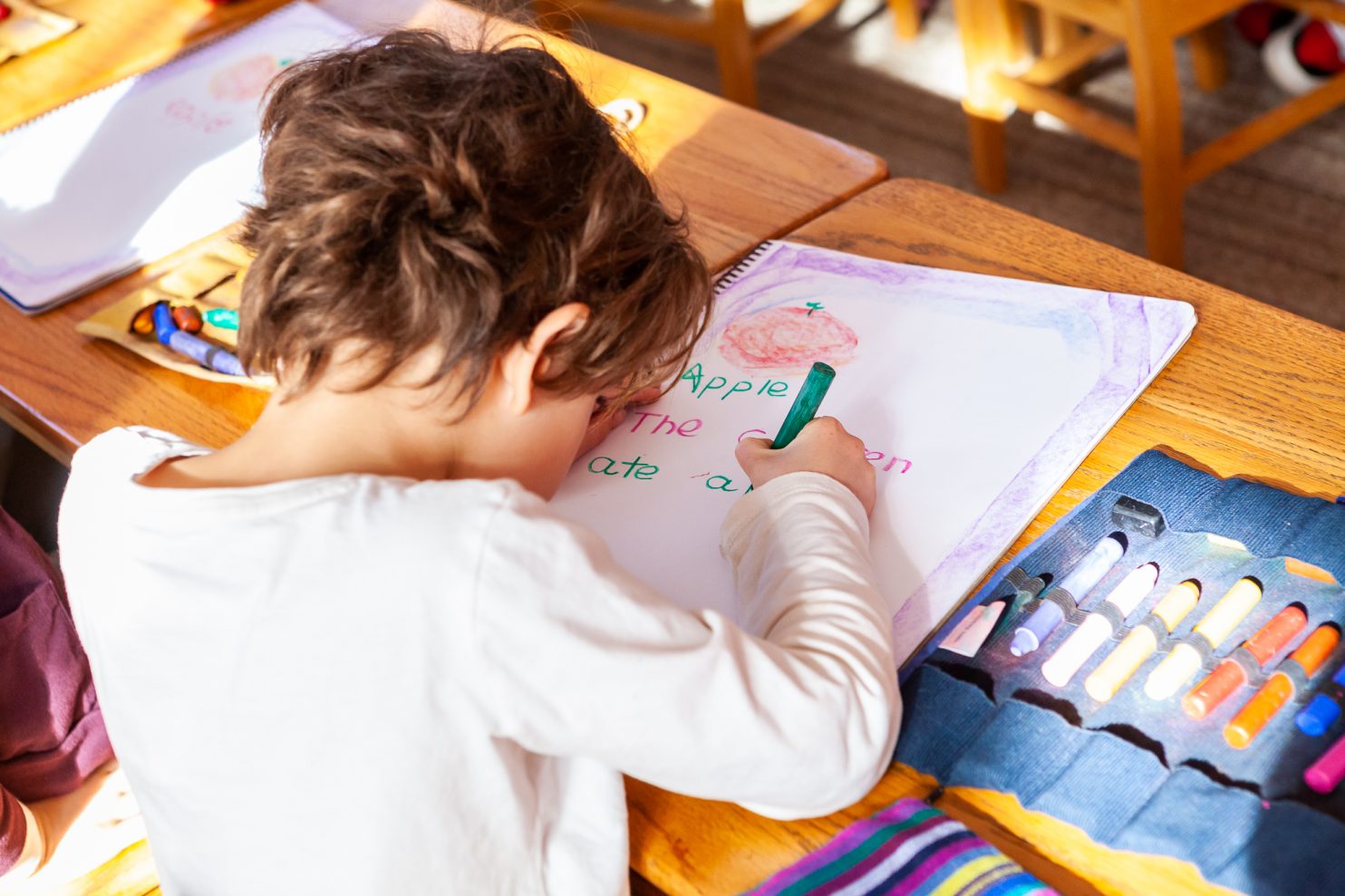As Waldorf educators, we recognize, as author and educator Kim John Payne reminds us, that screens don’t just entertain; they influence brain chemistry, motivation, and emotional safety. His insights affirm why our classrooms remain rooted in human connection, holistic learning, and imaginative play as the foundation for true digital citizenship later in life1.
In this post, we’ll explore why Waldorf education approaches screens differently, drawing on neuroscience, research on child development, and Waldorf pedagogical philosophy.
The Neuroscience of Screens
Research confirms what educators observe in classrooms: excessive screen use can affect social, emotional, and neurological development. Social psychologist Jonathan Haidt, in The Anxious Generation, documents a “great rewiring of childhood” caused by smartphones and social media, leading to:
- Sleep deprivation
- Attention fragmentation
- Social anxiety
- Loneliness and social withdrawal
- Addiction and perfectionism
Haidt notes these challenges accelerated dramatically around 2012, as children transitioned from a play-based to a phone-based childhood2. When children engage with screens, their brains experience a surge of dopamine, adrenaline, and cortisol, a cocktail designed to keep them returning for more. Children and adolescents are still developing the self-regulation skills needed to manage the intense stimulation that screens provide.
Finding Balance
Breaking the cycle of screen overstimulation is essential, not only for restoring emotional equilibrium but also for nurturing the lifelong habits of self-regulation, focus, and discernment that form the foundation of healthy digital citizenship. When children’s developing brains are continually flooded with digital stimuli, their capacity to pause, reflect, and make mindful choices diminishes.
At City of Lakes Waldorf School, establishing balance begins with creating space for stillness, real-world connection, and meaningful engagement long before technology enters the picture.
The Waldorf Approach to Media Literacy
At CLWS:
- Early childhood and early elementary grades: Learning is screen-free, emphasizing social-emotional development, imagination, and hands-on exploration.
- Middle grades: Technology is introduced intentionally and critically, giving students the tools to think independently, evaluate media, and use digital resources thoughtfully.
Our pedagogical chair, Johanna Garcia, shares:
“At CLWS, our approach to media literacy begins with social and emotional learning, helping children understand what it means to be a thoughtful, responsible citizen. We guide them to translate these skills from human community to digital community, demystify the tools they encounter, and become mindful, intentional users of technology.”
CLWS classrooms provide calm, predictable, and sensory-rich environments that nurture children’s inner regulation. Through rhythm, play, and relational safety, rather than digital stimulation, students develop resilience, focus, and self-awareness, carrying these essential skills into all areas of life. By building strong foundations in curiosity, creativity, and emotional balance, they learn to approach technology with intention and awareness rather than habit or impulse; becoming conscious, capable, and compassionate media users.
Cyber Civics at CLWS
Beginning in the middle grades, Cyber Civics introduces students to a thoughtful, developmentally aligned approach to digital citizenship and media literacy. The program unfolds in three key stages: first, students explore Digital Citizenship, learning what it means to be safe, kind, and responsible in online spaces. Next, they develop Information Literacy skills, learning to question, evaluate, and verify the content they encounter. Finally, through Media Literacy for Life, students examine how media shapes perception, culture, and community; empowering them to think critically rather than consume passively.
Rooted in Waldorf education’s commitment to intentional, experiential learning, Cyber Civics is hands-on, discussion-based, and screen-minimal, emphasizing collaboration and reflection over passive scrolling. The goal is not just to teach students how to use technology, but to help them engage with it consciously and ethically without losing their humanity.
A glimpse into a recent Cyber Civics lesson at CLWS illustrates this beautifully. During a unit on AI literacy, students explored both the benefits and the potential pitfalls of emerging technologies. As part of the lesson, the students asked Google AI to generate a short biography of Gabriela Mistral, a Latin American Nobel Peace Prize winning author the class had recently studied. Google AI produced a convincing essay upon first glance, complete with links to sources. However, when Ms. Garcia invited students to evaluate its accuracy, the 8th graders quickly noticed a factual error. When they opened a second google search window (a process known as parallel reading), and asked Google to verify the accuracy of the facts noted, the room erupted in laughter and disbelief, as Google AI immediately contradicted itself. The AI had first claimed Mistral was the only Latin American Nobel Prize recipient, when in fact she is one of six.
This lighthearted yet eye-opening moment brought the lesson to life, demonstrating firsthand the importance of questioning sources, verifying information, and thinking critically about digital content. It was a vivid example of how Cyber Civics empowers students to approach technology with curiosity, discernment, and integrity.
Conclusion
Screens are not inherently “bad,” but timing, intention, and developmental readiness matter. Waldorf education ensures children develop the human capacities for internal motivation, emotional resilience, and critical thinking first; skills that form the foundation for responsible, mindful media use.
By prioritizing human connection, play, and real-world exploration, Waldorf schools like City of Lakes Waldorf School prepare students to navigate the digital world with thoughtfulness, creativity, and balance.
Interested in what a Waldorf education would look like for your child? Stop in for a tour of CLWS and see for yourself!
Follow us on social media to learn more about how Waldorf education fosters true media literacy and prepares children to thrive in both real and digital worlds.
References
- Payne, K. J. (2025, October). Why Screen Time for Kids Makes It Hard For Us – Emotional Self-Regulation – Part Four [Audio podcast episode]. In The Simplicity Parenting Podcast with Kim John Payne. Simplicity Parenting. https://www.simplicityparenting.com/podcasts/the-simplicity-parenting-podcast-with-kim-john-payne/episodes/2149073456
- Haidt, J. (2022). The Anxious Generation: Understanding How Smartphones and Social Media Affect Children. Simon & Schuster.


